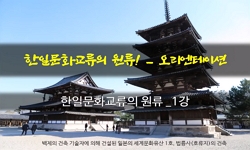This essay focuses on describing the dialogues and languages of the Odes quoted in Joseon Enoys(Tongsinsa)’s writings and illuminating the value of the Odes in these diplomatic affairs between Joseon and Japan. The research shows that Joseon Envoys ...
http://chineseinput.net/에서 pinyin(병음)방식으로 중국어를 변환할 수 있습니다.
변환된 중국어를 복사하여 사용하시면 됩니다.
- 中文 을 입력하시려면 zhongwen을 입력하시고 space를누르시면됩니다.
- 北京 을 입력하시려면 beijing을 입력하시고 space를 누르시면 됩니다.
https://www.riss.kr/link?id=A104101186
-
저자
김수경 (단국대학교)
- 발행기관
- 학술지명
- 권호사항
-
발행연도
2011
-
작성언어
Korean
-
주제어
조선 통신사 ; 『詩經』 ; 賦詩 ; 引詩 ; 筆談‧唱和. ; Joseon Enoys(Tongsinsa) ; the Odes ; fushi(賦詩) ; yinshi(引詩) ; literary exchange. ; Joseon Enoys(Tongsinsa) ; the Odes ; fushi(賦詩) ; yinshi(引詩) ; literary exchange.
-
등재정보
KCI등재
-
자료형태
학술저널
- 발행기관 URL
-
수록면
119-142(24쪽)
-
KCI 피인용횟수
3
- 제공처
- 소장기관
-
0
상세조회 -
0
다운로드
부가정보
다국어 초록 (Multilingual Abstract)
This essay focuses on describing the dialogues and languages of the Odes quoted in Joseon Enoys(Tongsinsa)’s writings and illuminating the value of the Odes in these diplomatic affairs between Joseon and Japan. The research shows that Joseon Envoys and Japanese intellectuals tend to use certain titles of pieces from the Odes which had been used as one of performances of the formal welcoming ceremony in the level of an emperor or a feudal lord during the time when the poem and the music had not yet been separated from each other. The certain vocabularies from the Odes also tend to be quoted frequently, for example, papaya(木瓜), fine jade(瓊琚), etc. In addition, we find that there is an instance of a Tongsinsa who exploits four-syllable-verse style of the Odes, too. Besides the quotations of the Odes, there are discussions about the trends and the existing problems of the literary exchange on the basis of the Odes’ principle and it’s function on the Pre-Qin Dynasty Diplomatic sphere. Since the existing studies have not given enough attentions the correlation of the literary exchange of Joseon Tongsinsa with the Odes, I believe that this study has a certain value on finding the connections between characteristics of Tongsinsa and of the Odes by giving specific examples.
국문 초록 (Abstract)
본 논문은 조선시대 통신사행 필담‧창화에서의 『詩經』의 引詩‧論詩 내용을 분석하고 조선-일본 간의 외교활동 배경에서 引詩‧論詩가 지니는 의의맥락을 파악하였다. 연구결과, 통신...
본 논문은 조선시대 통신사행 필담‧창화에서의 『詩經』의 引詩‧論詩 내용을 분석하고 조선-일본 간의 외교활동 배경에서 引詩‧論詩가 지니는 의의맥락을 파악하였다. 연구결과, 통신사행의 필담‧창화에는 先秦時期 燕享에 사용되던 『詩經』樂章 편명을 자주 언급함으로써, 통신사행의 우호적 외교 성격을 부각시켰고, ‘木瓜’나 ‘瓊琚’ 등의 특정 언어 이미지를 인용하여 詩文‧禮物의 贈答의 정감을 표현해냄으로써, 『詩經』상징 이미지를 효과적으로 사용하였으며, 때로는 『詩經』의 四言體를 사용하여 『詩經』의 體와 언어 이미지를 결합한 唱和 활동을 통해 引詩 효과를 극대화시키기도 하였다. 또한 통신사행 필담‧창화에서는, 引詩 뿐 아니라, 先秦時期 『詩經』의 選取過程 및 先秦 外交活動에서의 『詩經』 운용양상에도 관심을 기울였다. 이를 통해 통신사행 필담‧창화에서의 『詩經』 援用이, 先秦時期의 賦詩‧引詩를 이상적 모델로 삼고 있는 데서 연유하며, 바로 그 이유에서 『詩經』의 選取過程과 外交活動에서의 기능을 고찰하고, 그 의의를 당시의 唱和活動에 되살리고자 하는 담론이 시도되었음을 유추해 볼 수 있다.
참고문헌 (Reference)
1 奥田元繼, "兩好餘話"
2 龜井南冥, "龜井南冥昭陽全集 제1권, In 泱泱餘響" (日)葦書房 1979
3 이혜순, "조선 통신사의 문학" 이화여자대학교출판부 113-114, 1996
4 程俊英, "詩經注析" 中華書局 105-, 1991
5 錢鍾書, "管錐編‧ 毛詩正義" 三聯書店 171-, 2008
6 趙曮, "海槎日記, In 海行摠載 Ⅶ" 민족문화추진회 1974
7 瀬尾維賢, "桑韓唱和塤篪集" 日本 奎文館 1720
8 김상홍, "東아시아 歷代文化交流 人物集成의 意義, In 동아시아 삼국의 상호인식과 그 전환의 단초" 문예원 16-18, 2010
9 南龍翼, "扶桑錄, In 海行摠載Ⅴ" 민족문화추진회 1974
10 楊向時, "左傳賦詩引詩考" 臺灣中華書局 2-5,
1 奥田元繼, "兩好餘話"
2 龜井南冥, "龜井南冥昭陽全集 제1권, In 泱泱餘響" (日)葦書房 1979
3 이혜순, "조선 통신사의 문학" 이화여자대학교출판부 113-114, 1996
4 程俊英, "詩經注析" 中華書局 105-, 1991
5 錢鍾書, "管錐編‧ 毛詩正義" 三聯書店 171-, 2008
6 趙曮, "海槎日記, In 海行摠載 Ⅶ" 민족문화추진회 1974
7 瀬尾維賢, "桑韓唱和塤篪集" 日本 奎文館 1720
8 김상홍, "東아시아 歷代文化交流 人物集成의 意義, In 동아시아 삼국의 상호인식과 그 전환의 단초" 문예원 16-18, 2010
9 南龍翼, "扶桑錄, In 海行摠載Ⅴ" 민족문화추진회 1974
10 楊向時, "左傳賦詩引詩考" 臺灣中華書局 2-5,
11 村上秀範, "和韓唱和錄, In 延享戊辰" 1748
12 太宰純, "(信陽山人)韓館倡和稿"
동일학술지(권/호) 다른 논문
-
‘읽기·토론·쓰기’ 통합 교육의 효율성 제고 - 『명저읽기와 글쓰기』 강좌를 통해서 -
- 한민족어문학회
- 김원준
- 2011
- KCI등재
-
여행문학으로 읽는 김정중의 『연행록』 -정가현(程嘉賢)과의 교유를 중심으로
- 한민족어문학회
- 함영대
- 2011
- KCI등재
-
<除夜, 放舟行二百里, 紀壯遊述客懷, 得二百韻排>를 통해 본 南龍翼의 二元的 認識世界와 그 意味
- 한민족어문학회
- 윤재환
- 2011
- KCI등재
-
『日東壯遊歌』 에 대한 비판적 성찰 - 18세기 서얼출신 향반의 사행체험
- 한민족어문학회
- 신명숙
- 2011
- KCI등재
분석정보
인용정보 인용지수 설명보기
학술지 이력
| 연월일 | 이력구분 | 이력상세 | 등재구분 |
|---|---|---|---|
| 2027 | 평가예정 | 재인증평가 신청대상 (재인증) | |
| 2021-01-01 | 평가 | 등재학술지 유지 (재인증) |  |
| 2018-01-01 | 평가 | 등재학술지 유지 (등재유지) |  |
| 2015-01-01 | 평가 | 등재학술지 유지 (등재유지) |  |
| 2011-01-01 | 평가 | 등재학술지 유지 (등재유지) |  |
| 2009-01-01 | 평가 | 등재학술지 유지 (등재유지) |  |
| 2006-01-01 | 평가 | 등재학술지 선정 (등재후보2차) |  |
| 2005-06-15 | 학술지명변경 | 외국어명 : 미등록 -> Hanminjok Emunhak |  |
| 2005-06-15 | 학술지명변경 | 외국어명 : 미등록 -> Hanminjok Emunhak |  |
| 2005-01-01 | 평가 | 등재후보 1차 PASS (등재후보1차) |  |
| 2003-01-01 | 평가 | 등재후보학술지 선정 (신규평가) |  |
학술지 인용정보
| 기준연도 | WOS-KCI 통합IF(2년) | KCIF(2년) | KCIF(3년) |
|---|---|---|---|
| 2016 | 0.67 | 0.67 | 0.71 |
| KCIF(4년) | KCIF(5년) | 중심성지수(3년) | 즉시성지수 |
| 0.74 | 0.73 | 1.266 | 0.19 |




 KCI
KCI KISS
KISS



